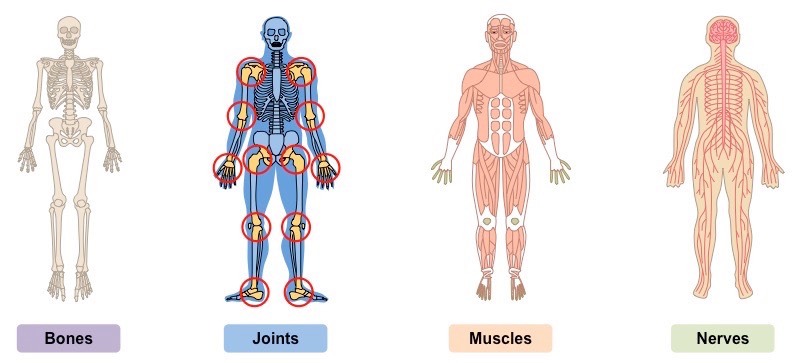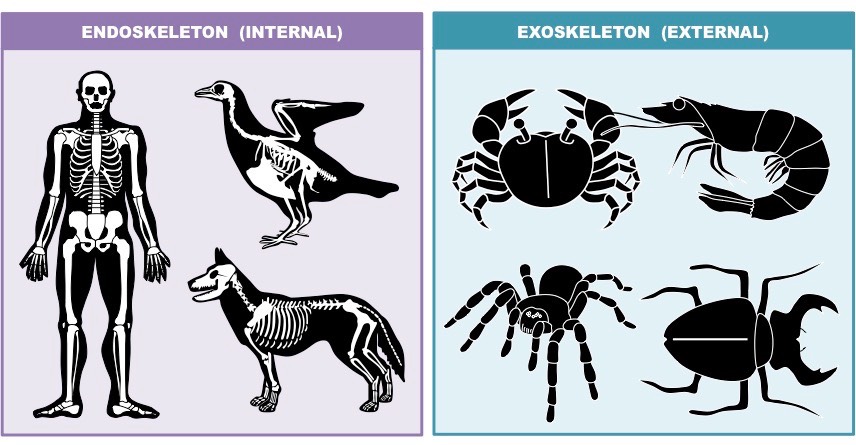![]()
Understanding:
• Bones and exoskeletons provide anchorage for muscles and act as levers
Movement Systems
The ability to move is controlled by a number of interacting body systems, including:
- Skeletal system – consists of bones that act as levers and provide a structure for the muscles to pull
- Muscular system – muscles deliver the force required to move one bone in relation to another
- Nervous system – delivers signals to the muscles which cause them to contract and create movement
Body Systems Involved in Locomotion

Skeletal System
Skeletons are a rigid framework that function to provide support and protection for body organs
- Skeletons can be internal (endoskeletons) or external (exoskeletons) depending on the organism
- Endoskeletons typically consist of numerous bones, while exoskeletons are comprised of connected segments
Skeletons provide a surface for muscle attachment and thus facilitate the movement of an organism
- Bones and exoskeletons act as levers, moving in response to muscular contraction
- Bones are connected to other bones by ligaments, and bones are connected to muscles by tendons
Endoskeletons versus Exoskeletons

